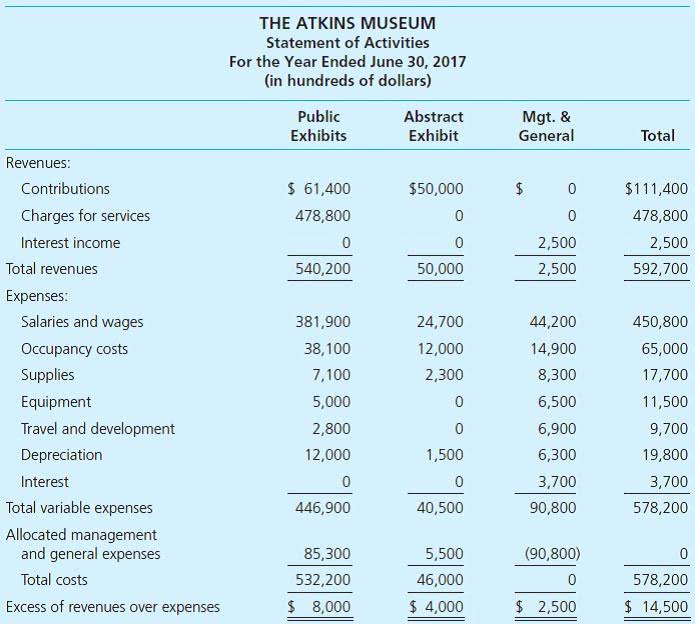
However, you can also add expenses and revenue in a two-column ledger with each transaction on one line. Compliance is one of the most crucial things that a business should look at while deciding which accounting system to use. Thus, the single-entry system is primarily used because of its convenience and how intuitive it can be to record just the cash expenses and incomes. But this system can severely deter the entity’s single entry bookkeeping vs double entry ability to truly represent and analyze its financial position. Public companies are legally required to follow GAAP, but even if your business is a private company or just getting started, it’s good practice to implement GAAP processes as soon as possible. Just like the name of the method, under single-entry bookkeeping, the transactions occurring during the operations of any business are recorded once.

Although a person should be professionally skilled to maintain records as per this system. Moreover, due to the complexity of this system, it is time-consuming too. That said, most accounting software is used double-entry accounting.
What is the difference between Single-Entry Accounting and Double-Entry Accounting?
In single-entry bookkeeping, debits or credits are entered only once so errors can easily go undetected. This “failsafe” provided by double-entry bookkeeping helps ensure the accuracy and completeness of your financial records. Most businesses rely on the double-entry bookkeeping technique for the recording of financial data and transactions.
- And you are going to debit accounts receivable, which shows you that you are owed money for the work you just did.
- However, most founders focus on setting up a system to pay vendors and record income as soon as possible and may not be aware they need to decide between single-entry vs. double-entry bookkeeping.
- Because the business has accumulated more assets, a debit to the asset account for the cost of the purchase ($250,000) will be made.
- Bookkeeping is documenting every transaction that occurs within a business.
Private companies that use accrual bookkeeping also have to apply double-entry bookkeeping. Basically, double-entry provides a 360 degree view of a business’s financial transactions, making financial reporting smoother and operations more transparent. When a business sells a good using single-entry accounting, the expenses for the good are recorded when the business purchases the good and the revenue is recorded when the business sells the good. As you can see, single and double-entry bookkeeping both have their uses, but most business owners find that one better suits their needs. Depending on your needs for simplicity, detail, and potential accounting insights, you may find a single-entry system works better for you—or vice versa.
Single-Entry Bookkeeping: The Simplified Accounting Method
Under the single form, there is no way to ascertain the assets, liabilities, profits, losses, expenditures, etc. related to the business. Hence, it becomes less presentable to others and confusing as well. At Pilot, we have a team of expert bookkeepers using powerful software to eliminate the most error-prone aspects of bookkeeping. However, this won’t be an issue if you’re in a creative service-based business with few expenses related to producing your work (such as copywriting). You should always remember that each side of the equation must balance out.
- Just keep in mind that even if you choose double-entry accounting, it doesn’t automatically mean that it is compliant with GAAP.
- You can use single-entry bookkeeping to calculate net income, but you can’t use it to develop a balance sheet and track the asset and liability accounts.
- Specialties include general financial planning, career development, lending, retirement, tax preparation, and credit.
- The double-entry system includes expenses, assets, revenue, equities, and liabilities.
An example of a double-entry transaction would be if the company wants to pay off a creditor. The cash account would be reduced by the amount the company owes the creditor. Then, the double-entry reduces the amount the business now owes to the creditor account as it has received the amount of the credit the business is extending.
Single-Entry vs. Double-Entry Bookkeeping
The IRS reports that many individuals and small businesses use single-entry bookkeeping. Remember that the IRS prohibits companies with annual gross sales of over $5 million from using this method. It’s also possible to expand the above simple cash book into a more detailed record keeping. The below example breaks down different types of expenses, which makes it easier to track spending by category. When you start a small business, one of your first financial decisions has to be whether you are going to use single or double-entry bookkeeping. If finance isn’t your strong point, you’re likely not looking forward to dealing with the accounting side of the business.

The debit is recorded in one account, while the credit is recorded in another. On the other hand, single-entry bookkeeping only uses one account per transaction. These include single-entry bookkeeping, double-entry bookkeeping, computerized bookkeeping systems, and virtual bookkeepers. Due to two-fold effect, the system possesses completeness, accuracy as well as it matches with the Generally Accepted Accounting Principles (GAAP).
Accounting made simple because it doesn’t have to be hard to understand. Make solid data-backed decisions, reduce costs and achieve consistent growth. You can stuff your receipts into one of our Magic Envelopes (prepaid postage within the US).
- However, the income statement is prepared to know the profit or loss of the business.
- With our flexible, powerful, cloud-based accounting software solution, you can generate detailed accounting records in whichever bookkeeping system works best for you.
- This article discusses single entry vs. double-entry bookkeeping plus the pros and cons of each financial reporting system.
- It is possible to build your own bookkeeping system—but the quickest, most effective way to create the right finance processes for your business is to work with a professional.
- Single-entry bookkeeping is an accounting system used to keep track of a business’s finances.
- A double-entry system is arguably the best since it can offer a 360-degree view of all your financial transactions.
However, understanding the needs of such entrepreneurs and to clear the confusion, we have summed up this article. This blog will help you guide about the difference between single entry vs double entry bookkeeping. Here, you will know everything there is related to the concept, right from the definition to the difference and beyond. So, allow us to kick-start this differential guide with some definitions. If it sounds a lot simpler than double-entry, that’s because it is. In fact, businesses running off single-entry only record the date, amount, and name of each transaction.
Generate a Trial Balance
Single-entry bookkeeping is an accounting system used to keep track of a business’s finances. There is only one entry made per business transaction; most entries record incoming or outgoing funds. Transactions are recorded in a “cash book”—a journal with columns that organize transaction details like date, description, and whether it’s an expense or income.





